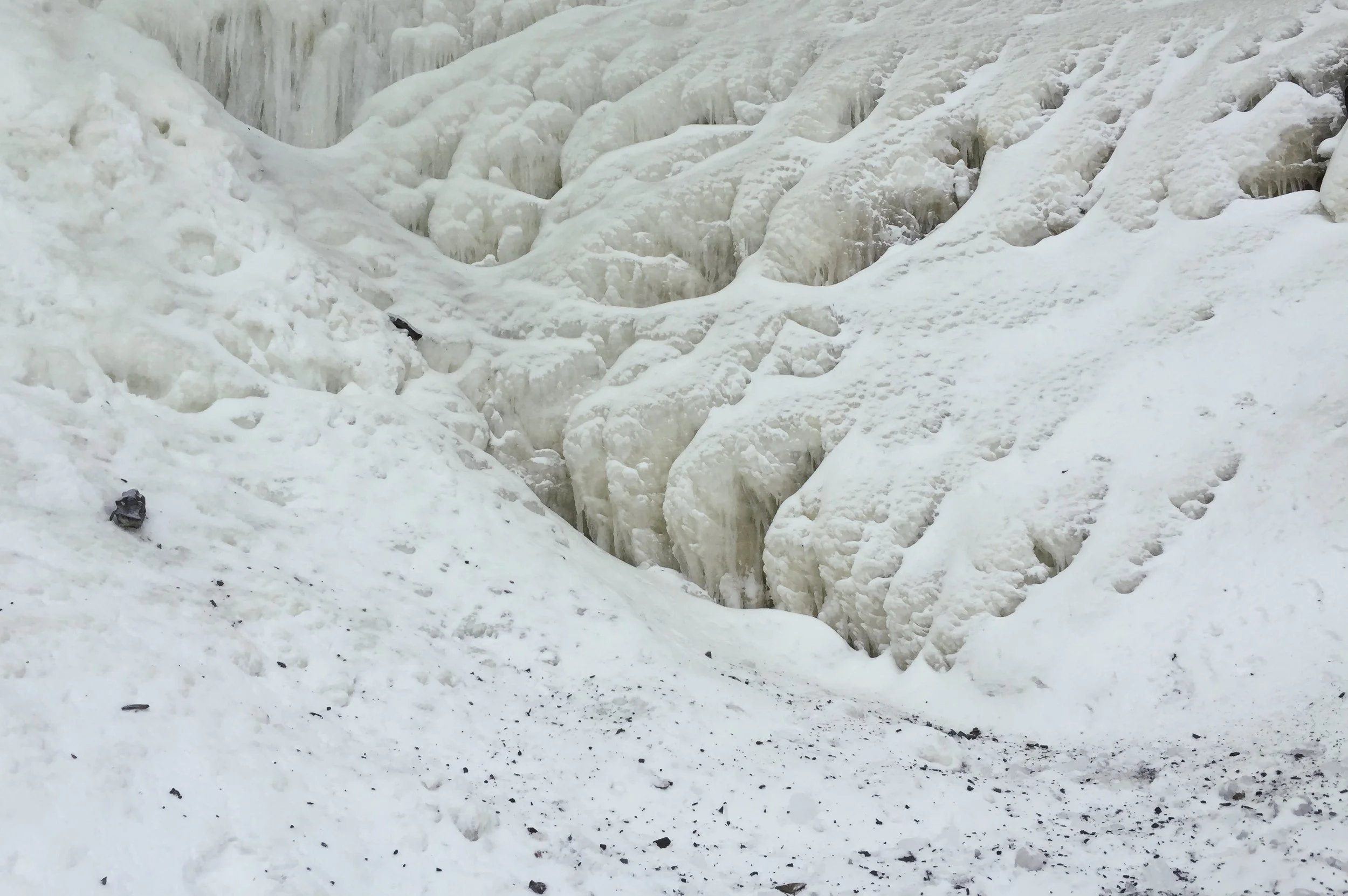Doilies and Drawing
 A new post is long overdue, sorry that it has been so long since my last update!
A new post is long overdue, sorry that it has been so long since my last update!
Over the last two weeks I have been spending endless hours each day at the studio, preparing for our wood firing, midterm critiques, and exhibition deadlines. In April the 3rd year students in the Craft and Design programs will be participating in several shows - for the ceramics students, there are only two more weeks until photographs of our finished work must be sent for catalogues and print materials. It is crunch time in the studio and not a day is wasted - many of us managed to make it to the studio on the Snow Day, when the rest of the college was closed. Rather than cuddling up by the fire and watching the snow pile up outside, I was on my way to Oakville in a blizzard - one of the few cars on the road. I only got stuck three times on the journey, but when deadlines are close, I can't afford to be taking any time off.
After a greenware critique with my peers and advisors last week, I started working away day and night on sets of cupcake stands, complete with ceramic doilies. I even started working on pillow forms, to play with the "chocolate on the pillow" fancy hotel tradition. Most of my forms are currently made with stoneware and slip, allowing me to play with surface treatment techniques - underglaze*, sgraffito* - and provide a hazy, atmospheric backdrop for my glazes. The doilies are made of high-fire porcelain, for a minimal, crisp look.
Here are some photos of my cupcake-stand-making process, and the pieces prior to firing.
[gallery type="square" ids="298,302,299,301,306,307,308,309,310,303,313,314"]
*Underglaze is the ceramic artist's equivalent of paint. They come in a range of colours and are able to be mixed (like paint) to develop a wider range of hues and values. Underglaze can also be mixed with water to create a "watercolour" effect, or painted on in layers to create sharp blocks of colour. Most underglazes are made from stains - ceramic pigments that generally stay the same colour after firing. Underglazes are formulated to have a wide firing range so they can be used at a variety of temperatures, and hold the quality of their colour. Though expensive, underglazes are one of the very few ways to develop a bright colour palette at high temperatures. In my work, I use underglazes (like the red in this photograph) >> to create areas of visual interest and "PUNCH", a space to draw the viewer's eye.
*Sgraffito is a traditional Japanese technique where a dark clay body is covered with white or coloured slip, and an image is carved through to reveal the clay body underneath. I use sgraffito in my work to map out a network of roadways, paths and textures. Using a very fine pin tool, the lines carry the user through the world of the pot, over mountains, around valleys and competing through intersections. Line quality and direction is one of the ways that I invite the user to experience the pot.



